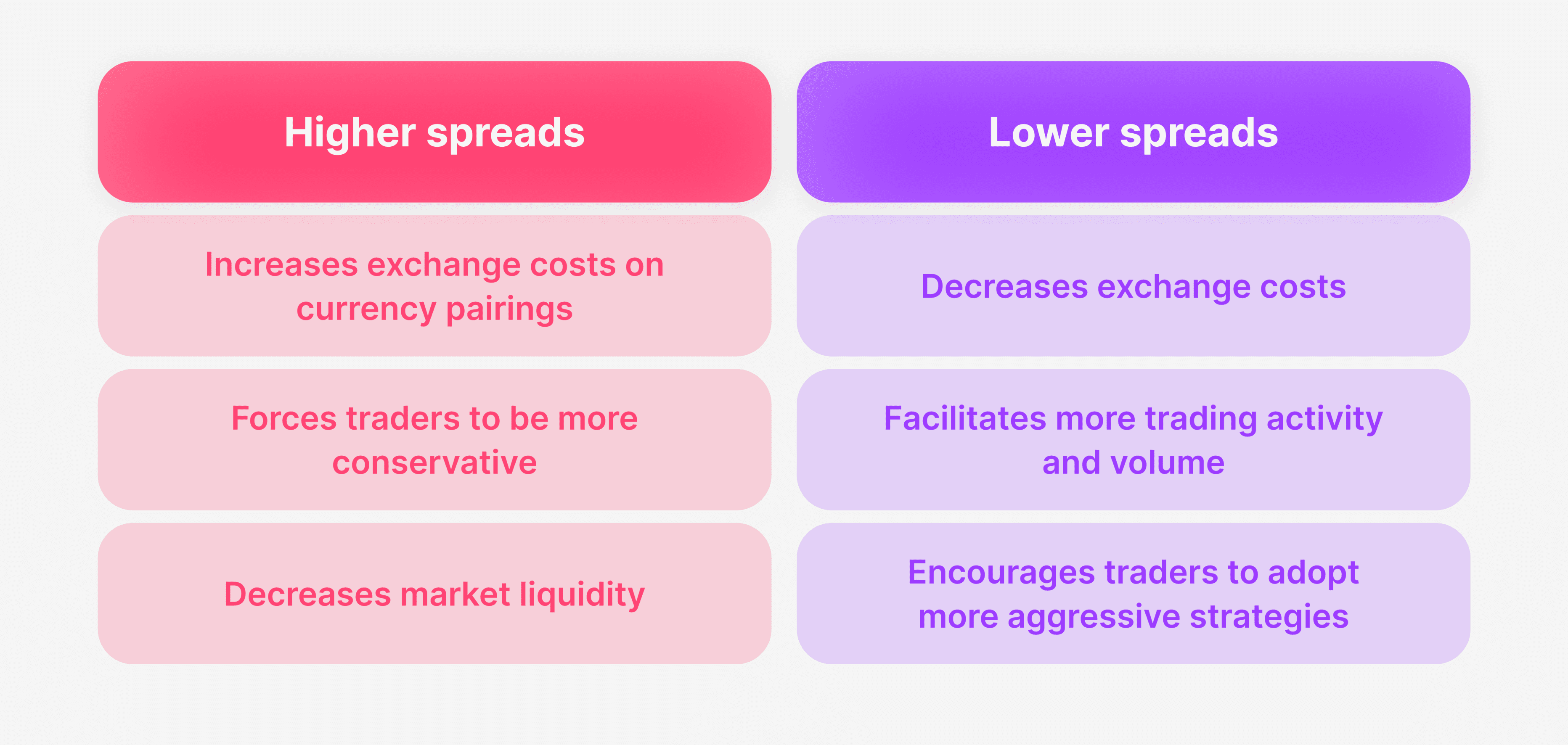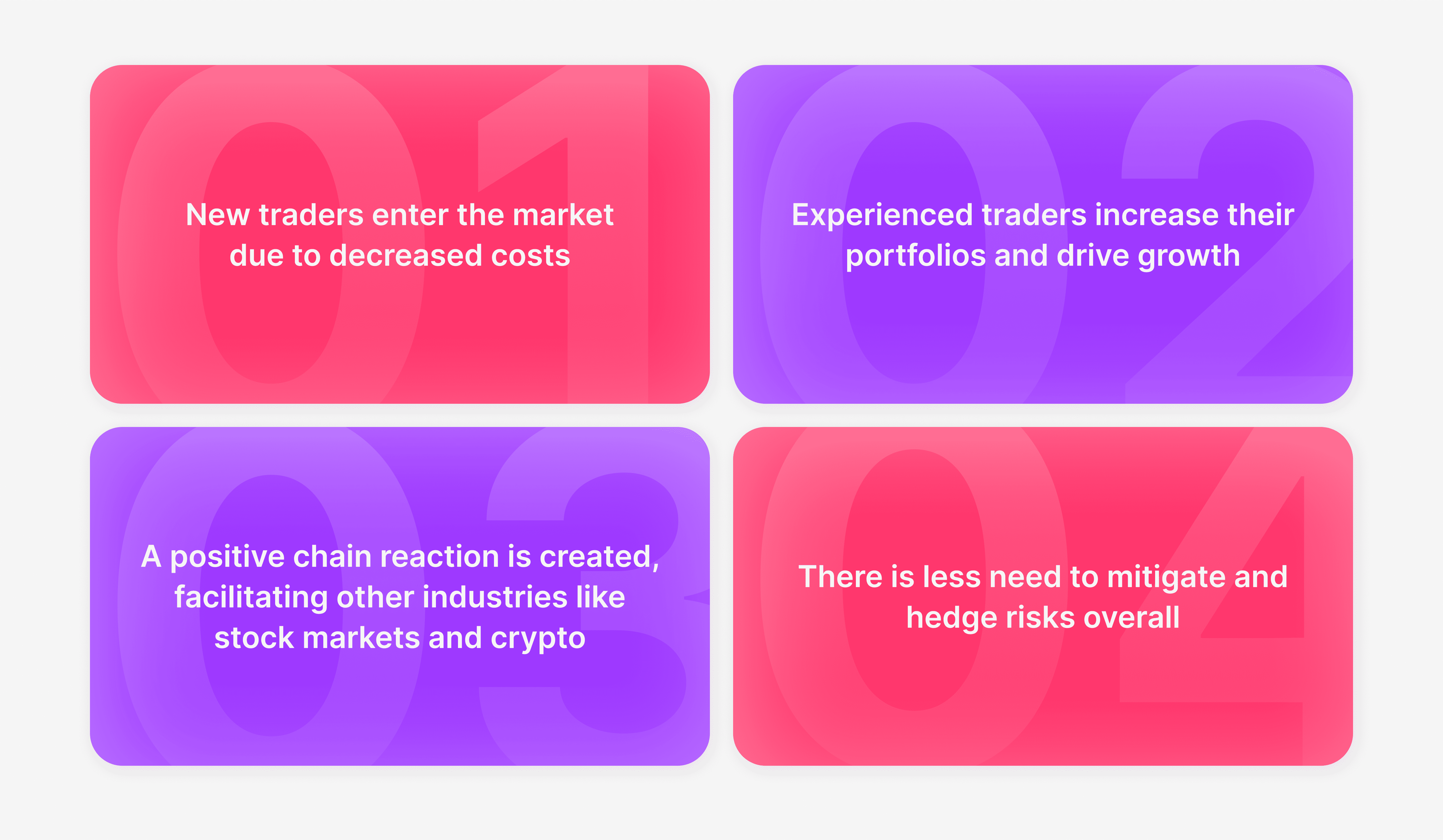How Do Tight Spreads Dictate Trading Strategies?

 By Levan Putkaradze
By Levan PutkaradzeAn experienced copywriter with a deep financial background and a knack for producing accessible, fascinating and valuable content. I demystify the world of fintech and crypto by producing engaging content in this field. I believe that every intricate concept, idea and methodology can be presented in an understandable and exciting way, and it is my job to find that way with every new topic. I constantly challenge myself to produce content that has indispensable value for its target audience, letting readers understand increasingly complex ideas without breaking a sweat.
 By Tamta Suladze
By Tamta SuladzeTamta is a content writer based in Georgia with five years of experience covering global financial and crypto markets for news outlets, blockchain companies, and crypto businesses. With a background in higher education and a personal interest in crypto investing, she specializes in breaking down complex concepts into easy-to-understand information for new crypto investors. Tamta's writing is both professional and relatable, ensuring her readers gain valuable insight and knowledge.

The forex market has been a dominant presence in the global economy since its very inception. In 2023, forex trading has reached new heights of global influence, affecting numerous neighbouring industries like the stock market, digital commerce and the economy in general. The forex market heavily impacts the trading strategy of virtually every other sector globally.
Even if you are not directly involved in this juggernaut market, it is essential to understand the basics and have a firm grasp on significant factors affecting it. One such key concept is spreads, specifically tight spreads, casting a large shadow over the entire industry.
Let's start with the biggest question - what is a market spread in forex? Forex spreads are the difference between the buy and sell prices presented by various brokers and market makers. For example, if broker X sells currency Y for $1.5 and buys it for $1.3, the spread is calculated as a direct mathematical difference between the ask ($1.5) and Bid ($1.3) prices.

While conceptually simple, forex spreads are very complex mechanisms to determine. Large brokers and market makers must include all relevant market variables, risks, forecasts and indirect influencing factors in calculating fair spreads for everyone. Naturally, this process is extremely complex and requires delicate handling, as even the most accurately projected spreads might be unprofitable for all parties involved.
But how do spreads impact the forex market in practice? Simply put, they are directly responsible for increasing or decreasing trading activities on a given currency pair. Many traders adjust and shift their strategies according to the changes in the spread numbers. After all, currency trading is highly profitable in large volumes on the global market. Therefore, even a slight shift in the spread volumes might severely impact the short and long-term plans of experienced traders.
For example, suppose certain economic events cause a USD-GBP pairing to produce tighter spreads. In that case, the forex market will witness a considerable spike in demand for USD by the GBP owners. The reason for this is quite simple - tighter spreads mean that USE just became slightly cheaper to purchase by the traders that hold GBP currency. Since USD is an extremely popular and demanded currency worldwide, numerous traders will decide to buy more of it since it costs considerably less in large volumes.
Thus, the changes in spread numbers act similarly to the simple price spikes. If product X becomes more expensive, fewer people will buy it. If it becomes cheaper, the demand will rise. The same logic applies to wider and tighter spreads in the forex market.
To further visualise the effects of this mechanism on the forex market, let's explore what happens on the forex market if a particular currency pairing changes its spread margin. Currency X had an average spread in the past, but prime brokers have decided to widen the gap between bid and ask prices due to several factors.

As a result, the demand for currency X will decrease considerably. The traders that were previously planning to purchase this currency and utilise it in their strategies will no longer consider it to be a viable option. Additionally, the local currency X market might experience liquidity problems since the natural currency inflow will decrease due to faltering demand. Thus, the currency X pairing will require additional financing, resulting in even higher costs for forex brokers and other market maker institutions. Higher spreads can create a chain reaction, causing the currency to become more expensive and less accessible.
Conversely, if currency X's spreads were to tighten, here's what would transpire - more traders and investors would consider purchasing currency X, as its purchasing price just became lower. The liquidity, in this case, would be abundant, as the general market demand would facilitate an increase in trading volumes. Finally, brokers might decrease the spread margin even further, as the increased demand would make even lesser spreads highly profitable.
So, it's easy to see the inverse relationship between higher and lower spreads. Each change could skew the forex market in a completely different direction. However, these radical points are seldom reached, as the market frequently self-corrects and adjusts spread margins to offset any adverse market effects.
As outlined above, tighter spreads make currency pairs more affordable for traders and investors in forex. But how do tighter spreads affect the buying behaviour and rationale of the trading world in the long term? Let's discuss.

First and foremost, spreads are the gateway toward growth in the forex market. Tighter spreads directly affect the trading style of market participants, encouraging them to become more aggressive with their strategies and pursue riskier venues without getting cold feet. Naturally, even the tightest spreads don't eliminate the need for risk management tools and general diligence, but it is undeniable that they facilitate plans with considerably more risks involved.
Traders are ready to take on this risk due to its costs. Therefore, the demand for all relevant currency pairings will rise throughout the market, creating ripple effects in other industries as well. Investors will become more active on other sideways markets due to their increased forex reserves, increasing the trading range and investing in commodities that they would otherwise ignore. Simply put, tighter spreads are an excellent catalyst for economic growth on a global scale.
As mentioned above, the market risks persist on the open forex market, but narrow spreads reduce the requirements for hedging your spread bets. These mechanisms allow traders to pursue riskier strategies without investing too much time and resources into purchasing hedging instruments and mitigating their risks aggressively. Thus, the market can swiftly shift from being conservative into an all-out demand spike that will stimulate the economy naturally. As a result, fewer risks will lead to organic market growth that will positively affect all neighbouring markets of the forex landscape.
Tighter spreads have a tremendous impact on the forex trading system, allowing investors to become more aggressive with their approach and pursue riskier plans without reservations. It is difficult to overstate the positive influence of tight spreads in forex, as they dictate the trader's buying behaviour, liquidity levels and market growth very effectively. So, before deciding to purchase any currency pairings on the market, investigate the current and forecasted spread margins, as they could be the difference between a losing trade and a successful one.